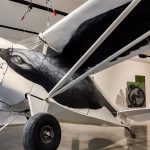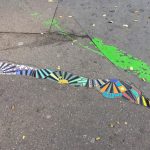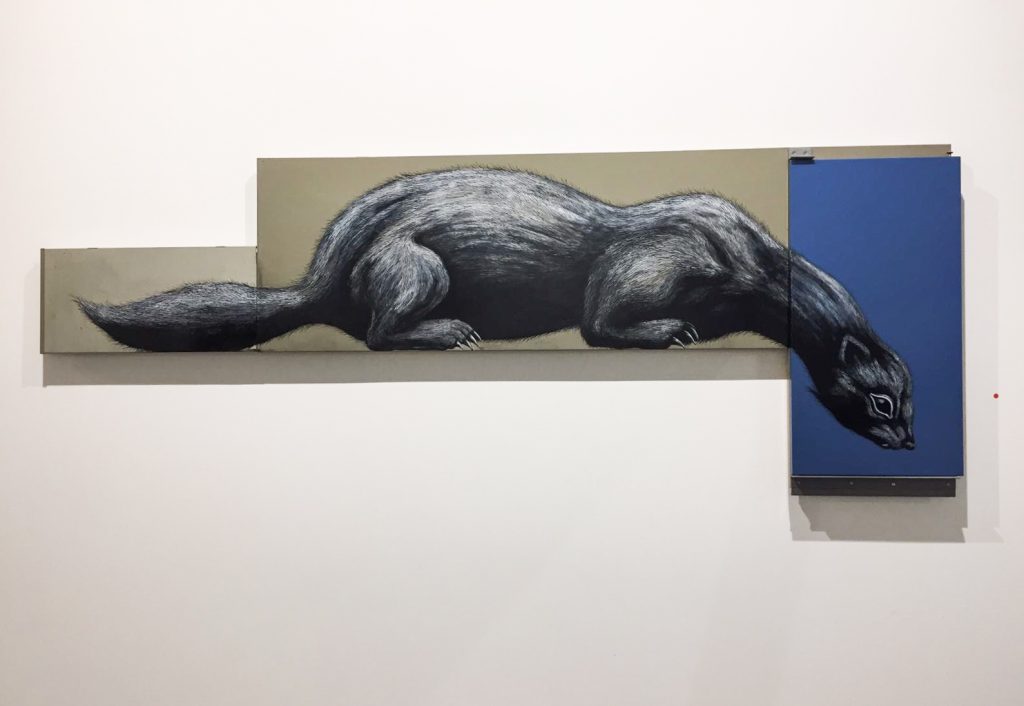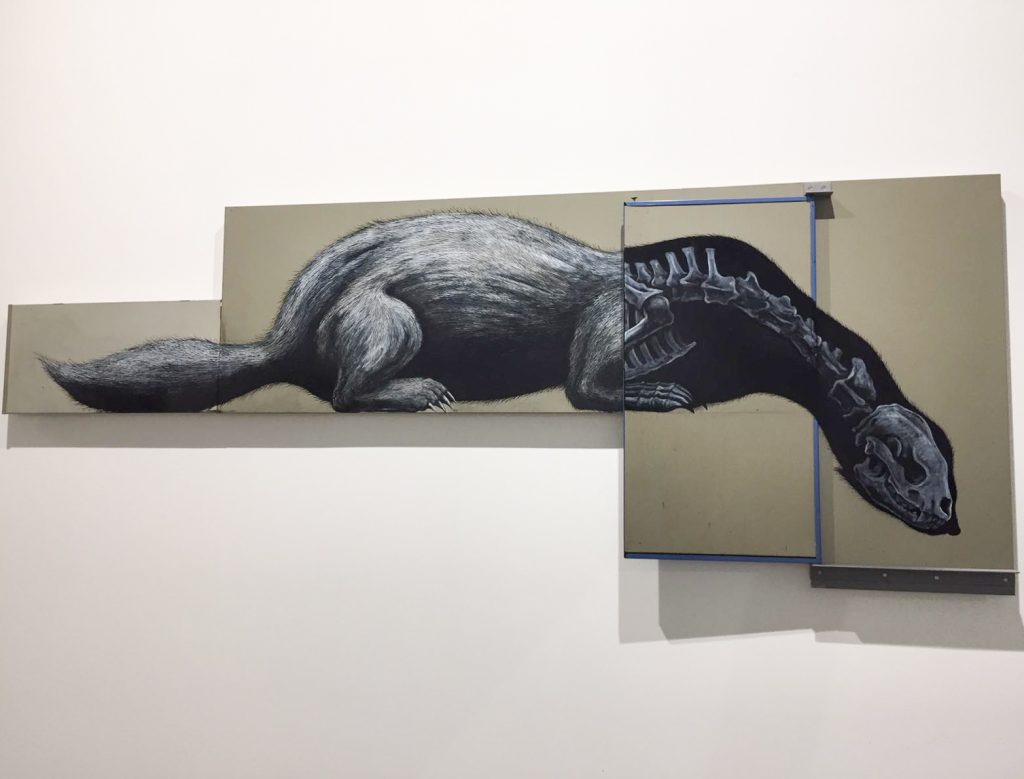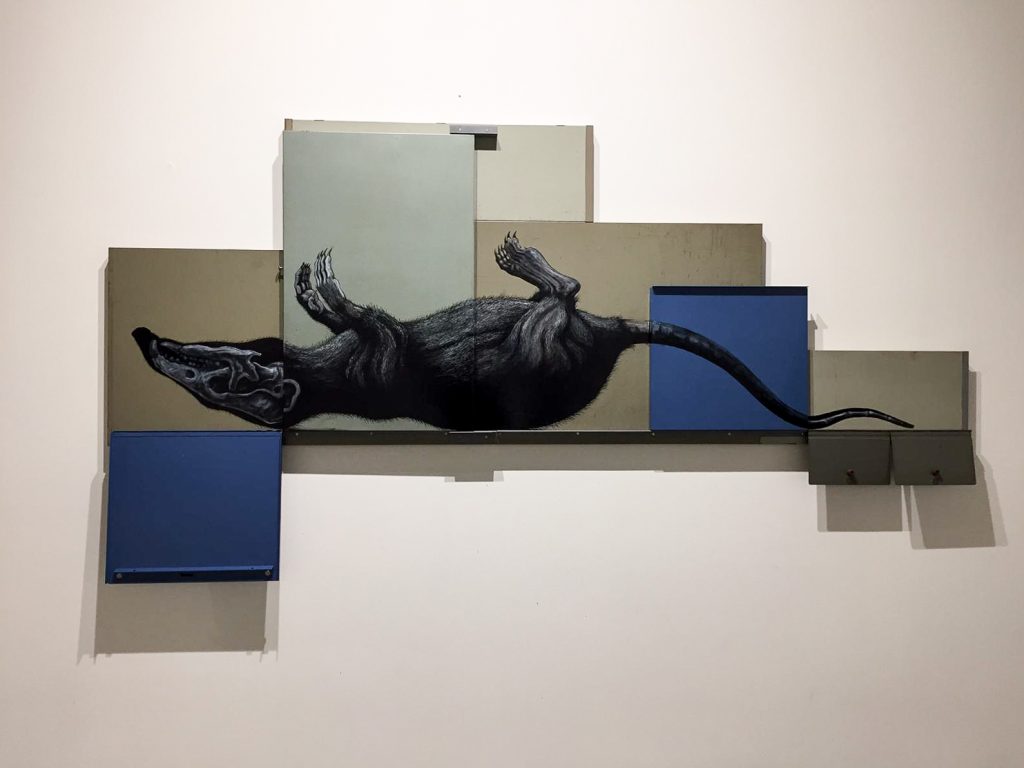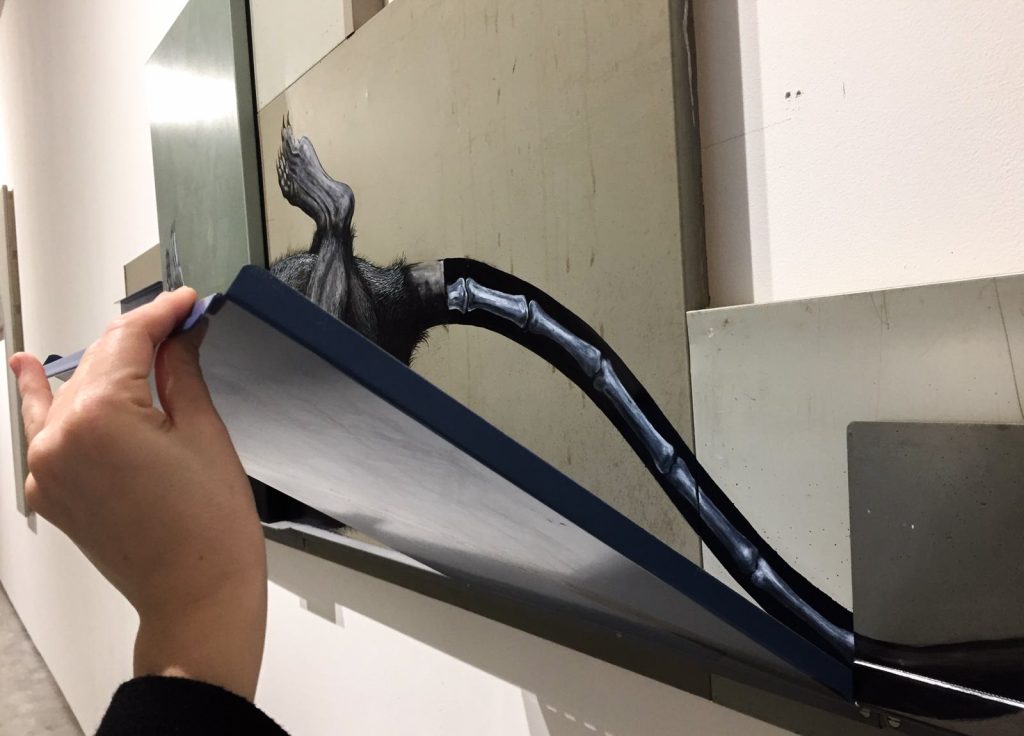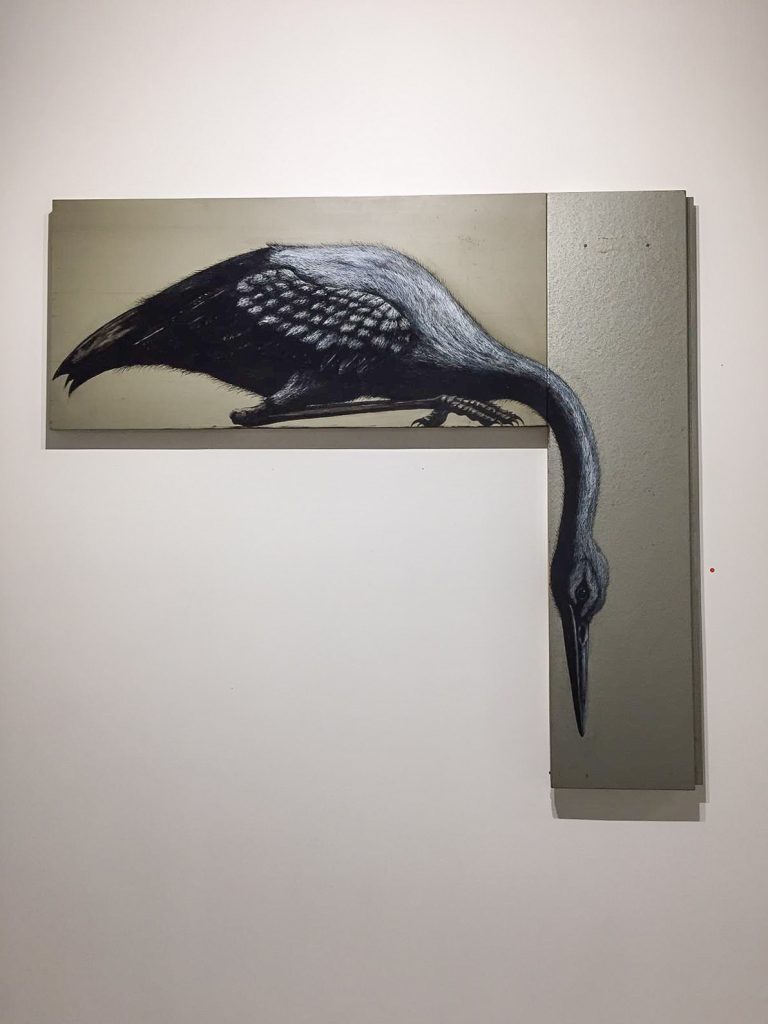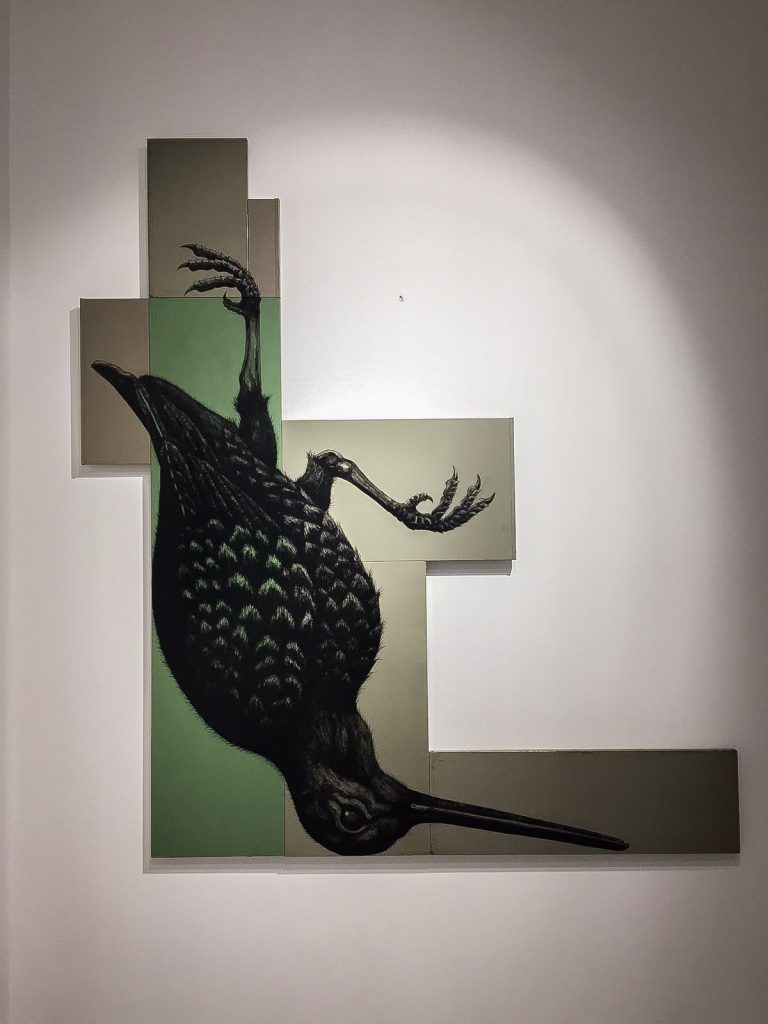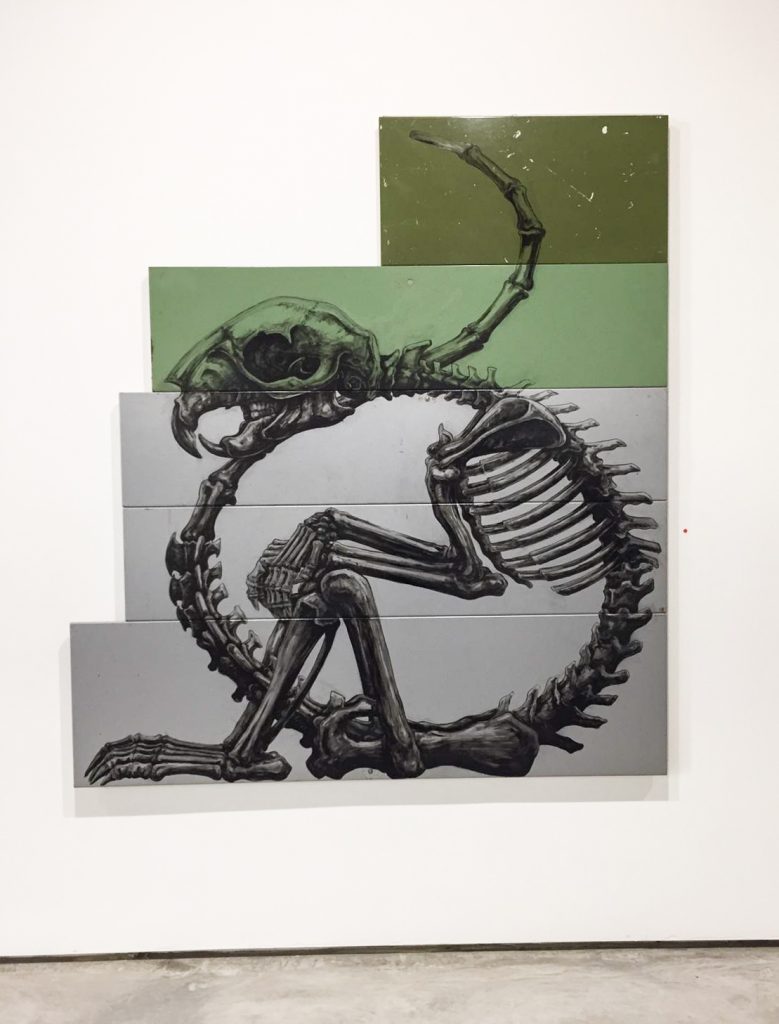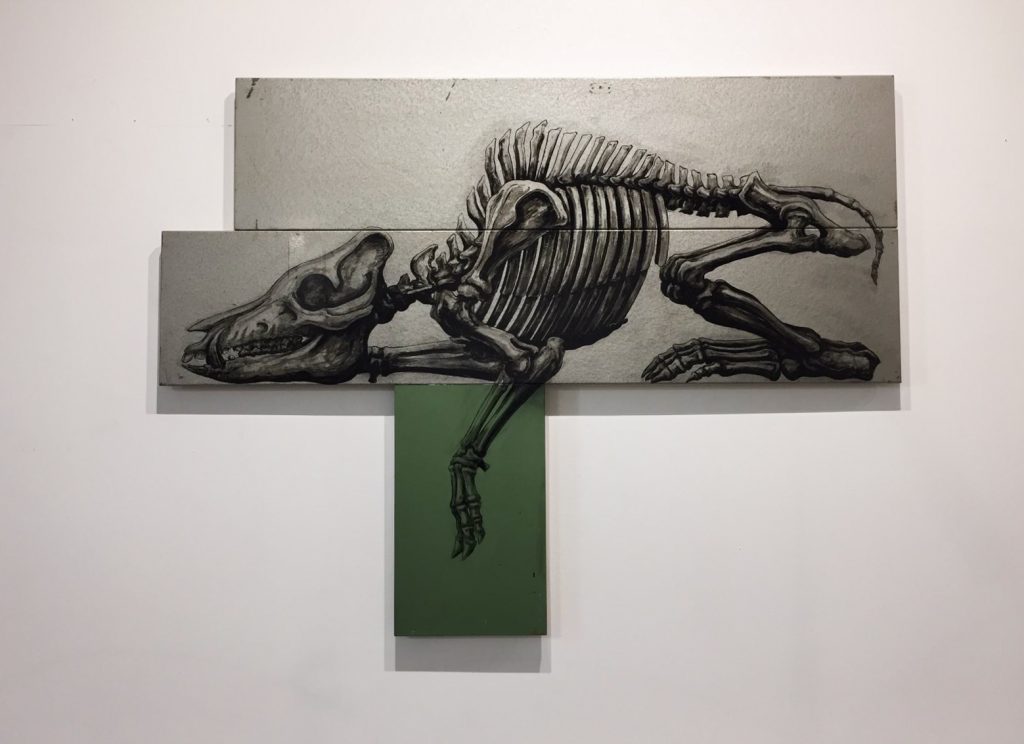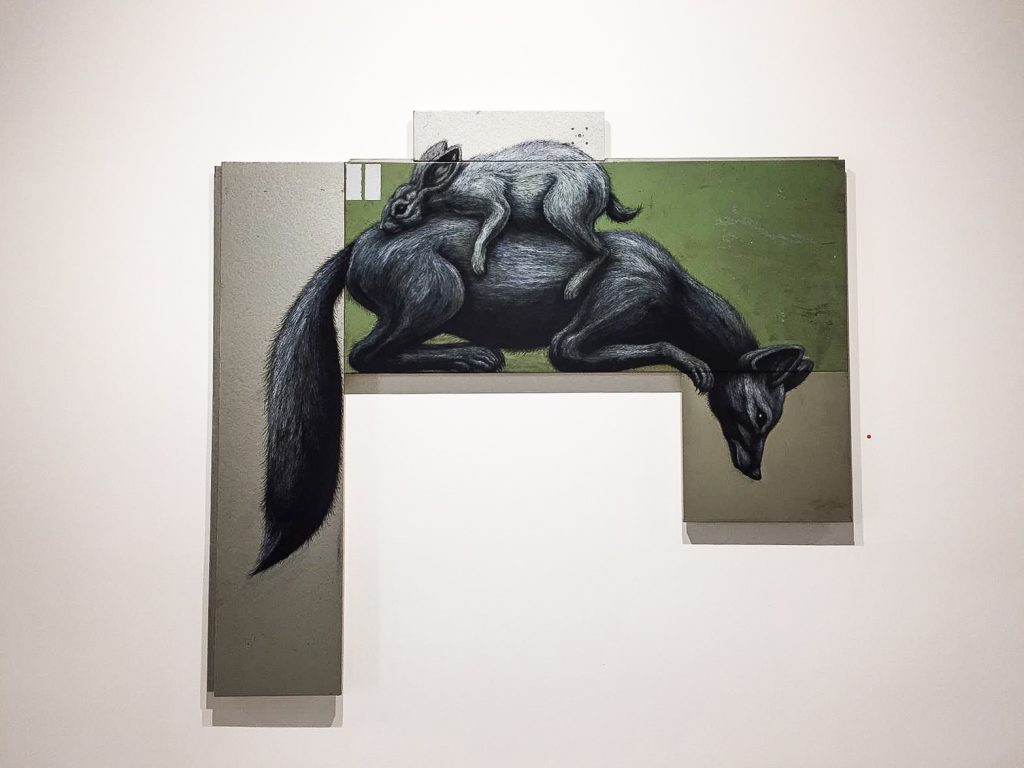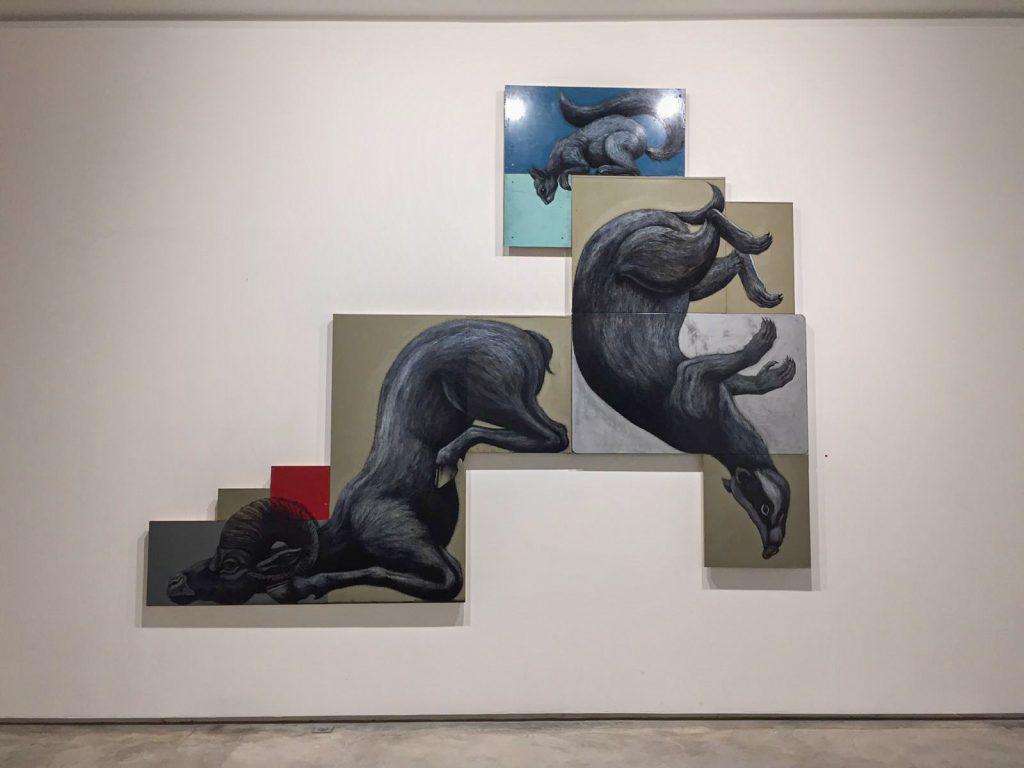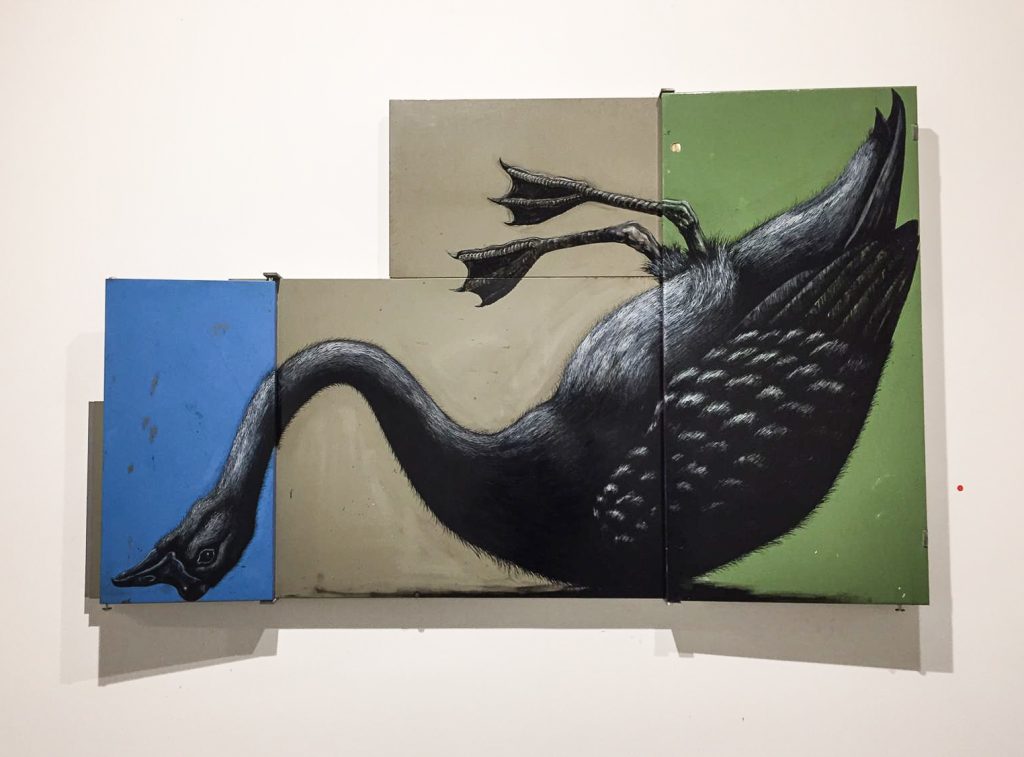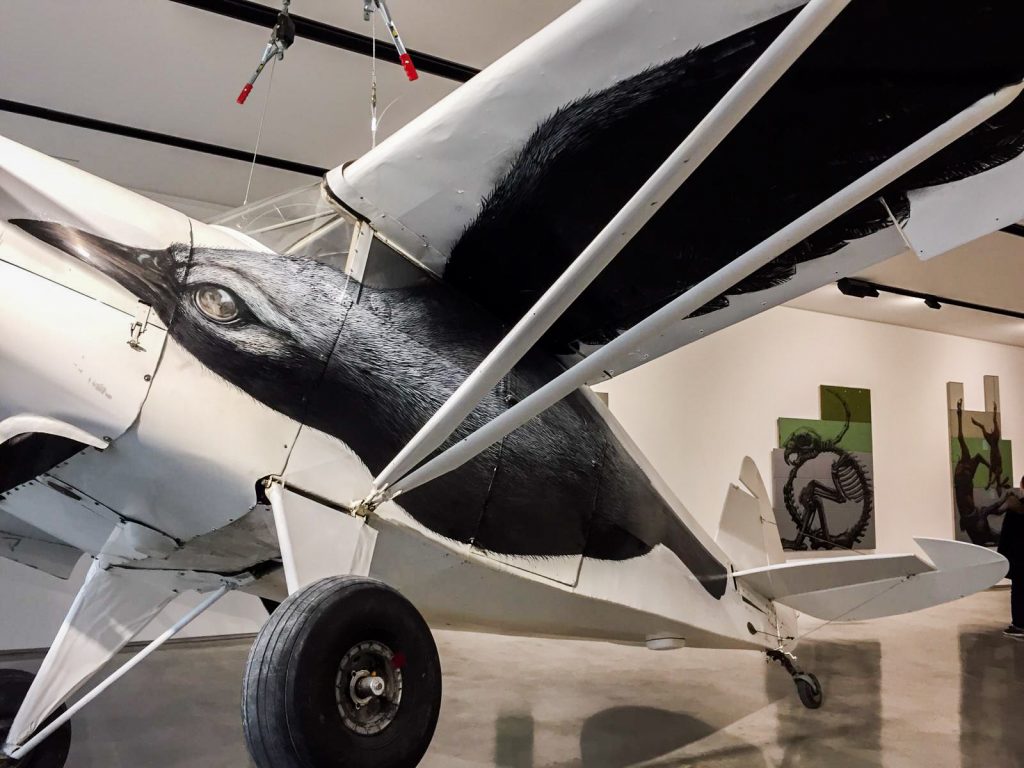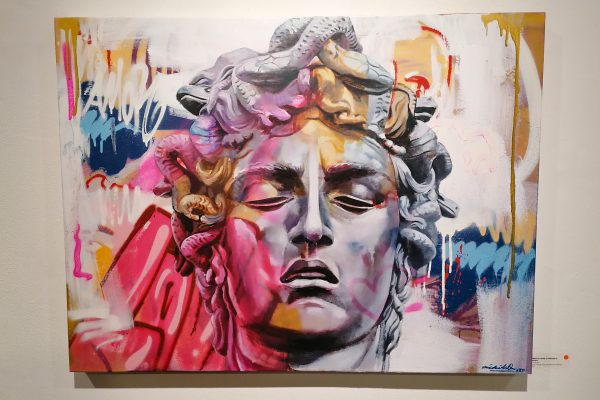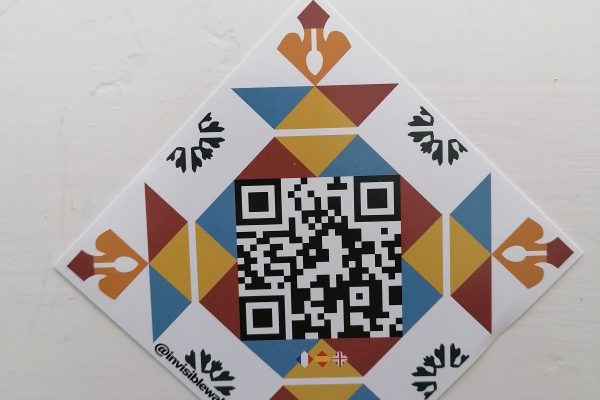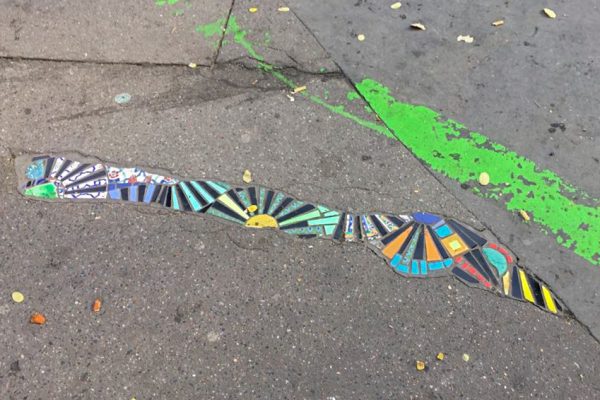To populate our cities with wildlife is perhaps the mission that the artist ROA has set for himself. In his exhibition entitled Natural History, at Itinerrance, he asks us the following question: ‘Have we lost the link with Nature?’.
Under the cover of anonymity, ROA generally remains discreet about the meaning of his artworks and prefers to let them speak for themselves.
This was ROA’s very first exhibition that I had the pleasure of attending – and almost my only dose of culture from this ‘covidated’ winter. I had already been able to admire some of his murals in Montreal, Madrid and London. And Elsa had sent me some pictures from Berlin and Vienna. But this time I was particularly sensitive to the scope of his work as if his pieces echoed my current thoughts and especially the context related to the studies I am pursuing in urban planning and biodiversity at the National Museum of Natural History in Paris and the health crisis we are going through.
The title of the article is inspired by Bruno David, Director of the National Museum of Natural History, and his recent publication A l’Aube de la 6ème extinction (Grasset, 2021). Indirectly and through our interpretations of ROA’s work, the following invites everyone to take an interest in the environmental issues addressed in this book.


Itinerrance Gallery (2020) 
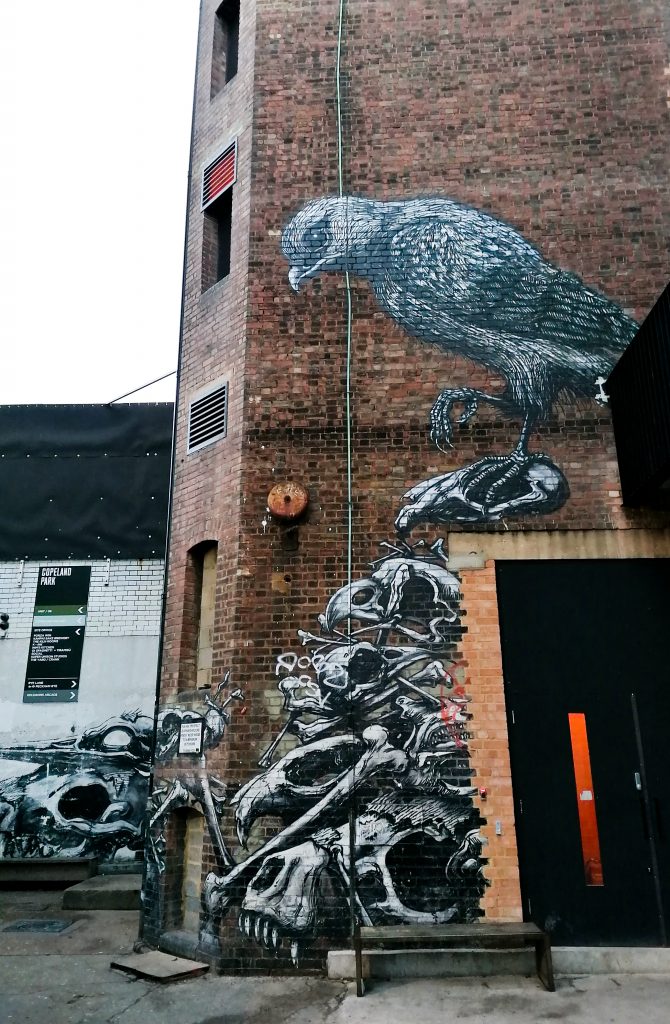
London (2019) 
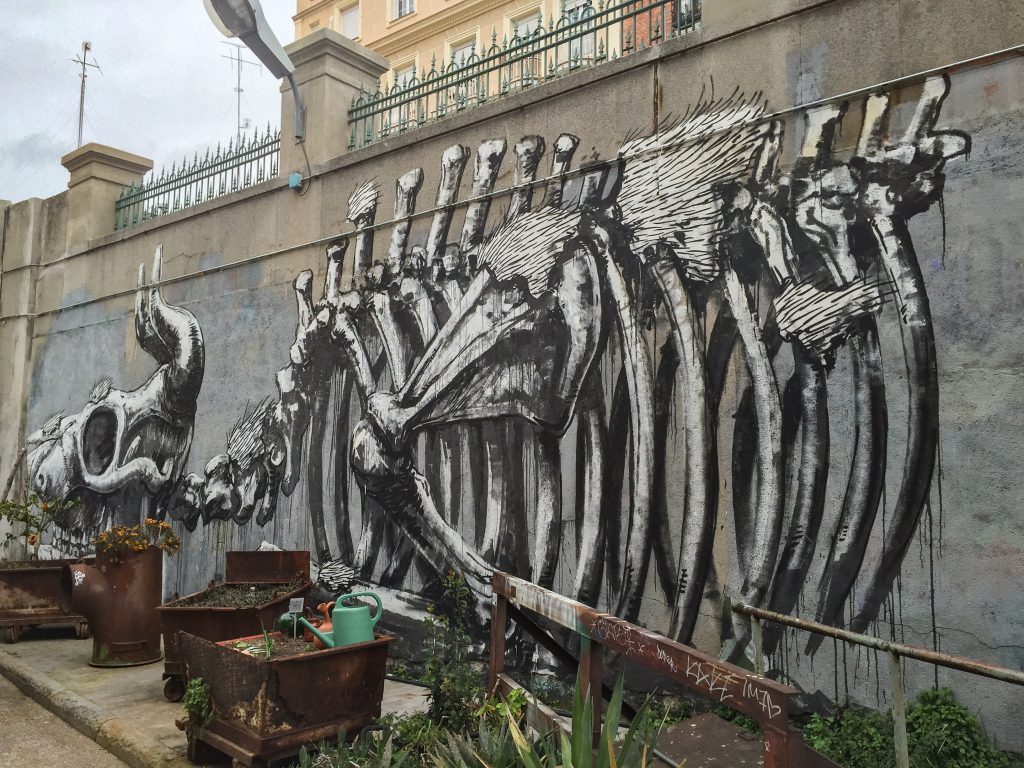
Tabacalera in Madrid (2018)
The artist’s approach
The giant animals of the artist ROA are unmissable if you walk nearby. They generally take up the whole surface of the wall as if they wanted to proudly fill all the space of the building that would have been granted to them. A great calm emanates from his works. His subjects are soberly represented in black and white, looking peaceful, asleep or even dead. No external element seems to disturb or frighten them. Sometimes, it is the skeletons of animals that he draws and the rare coloured patches are used to reproduce the organs. Nothing too macabre or bloody, merely pure representations of anatomy. ROA has had the opportunity to paint his animals in many countries on every continent as if he had displayed a kind of faunal inventory that he would have chosen to keep in different parts of the world.
The approach recalls the one used by naturalist explorers from the 12th to the 19th century who drew their observations and inventoried their discoveries of the flora and fauna of their expeditions. From this heritage, the artist draws obvious inspirations but his philosophy differs. His work is much more symbolic and brings us back to current environmental issues.
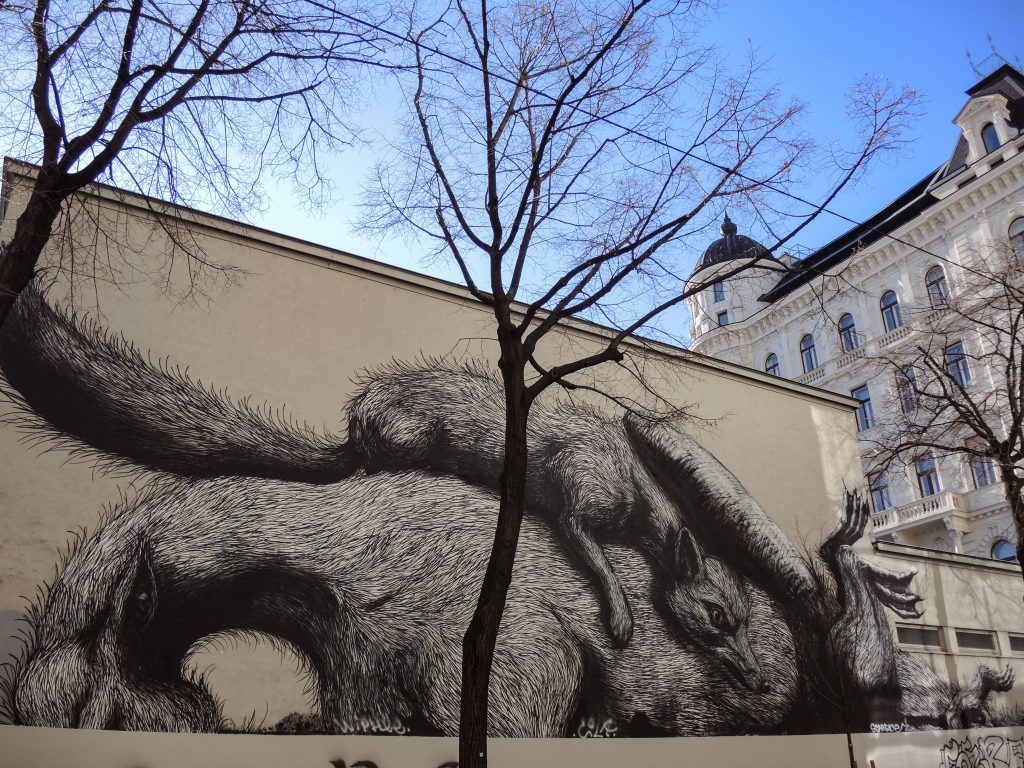


However, his technique is one of an artist and not one of a scientist. ROA studies the overlapping contexts in the realisation of his work starting with its support. The function of the building, the local culture and heritage or the history of the country also influence the final choice of the animal and the form it takes. Ultimately, his pieces embody his own interpretation of the urban environment and are the result of his personal experience. In 2014, ROA realised his one and only mural in Paris in the 13th arrondissement in the Boulevard Paris 13 project of large murals, organised by Itinerrance. He painted the skeleton of an animal inspired by a visit he made to the French National Museum of Natural History.
Enhancing the visibility of wildlife in the city
Through the realisation of his murals ROA draws our attention to the figures of his bestiary. He subtly familiarises us with the presence and existence of animals in the public space. This visibility that he offers to his subjects is even more increased by the playful side that we can draw from the contemplation of his artworks. We often find ourselves trying to identify the animal painted (especially if it is a skeleton!). That’s the riddle we gave you here, about his mural in the 13th arrondissement.
In the streets or in gallery, his work appears fundamentally interactive. In the pieces he is currently exhibiting at Itinerrance, this characteristic is even more explicit. He presents a series of paintings of animals on panels created from an assemblage of recycled metal plates. Like a cupboard, he has placed several latches allowing to open and play with the medium. The spectator is thus invited to open one or all parts of this device in order to reveal several layers of the anatomy of the animal in question: its entire body, its carcass and its organs. Beyond the playful aspect, ROA adds a strong educative value to his work. The public experiments and learns by itself what each animal looks like and what it is made of. The reference to naturalism with the approach and the name of the exhibition is further emphasised by the Latin titles of his artworks, which reveal the scientific name of the animals. Ultimately, it seems to us that his artistic practice goes hand in hand with a real work of awareness to better understand wildlife.
Reconnecting with biodiversity
Faithful to his commitment to align his work with its geographical context, ROA represents only local or emblematic species of the place and country where he paints. Indeed, the artist’s subjects are as if reintroduced into their natural environment. You will never see a mural of an elephant in London or Madrid. On the other hand, in Bangkok, yes! ROA maintains this same rigour to present only native species in his exhibitions. No tiger or giraffe but a goose, a squirrel or a wild boar. These are animals that live in France that we all more or less know. Among them are vulnerable or endangered species such as some shrews or skunks. One of the paintings shows a skinned rabbit and red deer that could evoke the activity of hunting, a subject of many debates and environmental questions in the context of endangered biodiversity.
Culturally and historically, a city is the preferred or even the exclusive habitat for humans and the animals they choose to host. ROA’s approach is to enhance the local fauna with which we coexist but have become used to ignore or even become hostile towards probably because our habits and urban lifestyles isolate us and make our exposure to nature increasingly rare, to the point of disconnecting our way of living from nature. His artworks tend to remind us above all that we do not only coexist among ourselves (humans) but also with a large diversity of species. That is what we call biodiversity as “biodiversity refers to all living beings and the ecosystems in which they live. It also includes the interactions of species with each other and with their environments“. And despite its artificial nature, the city does indeed embody an ecosystem in its own right (N. Machon, 2020). Spontaneously and inevitably, biodiversity invests the available space and interstices. ROA, who never draws humans, operates in the urban space by questioning our perceptions of the relationship between humans and biodiversity, as if to restore balance to the place of humans in this ecosystem.
The environmental dimension of his work
During my visit in the exhibition, the enthusiasm of the visitors was palpable. Especially in front of the display of a real aeroplane at the entrance of the gallery. On one side of the plane is depicted a raven and on the other side the artist has painted its insides. Keeping in mind the artist’s link between his subject and its context, we think that the raven on the plane refers to the relationship between human beings and animals with this strong idea that our species have conquered all environments; sky, land, sea and even beyond. The exhibition would thus echo the era of the sixth mass extinction, which refers to the impact of human activities on the planet leading to the disappearance of species.
The biodiversity decline receives less media attention than the global warming, which spontaneously evokes the image of a hungry polar bear on the melting ice floe, or a koala caught in flames in Australia. This kind of spectacular phenomenon is more easily imprinted on our minds. While the dramatic decrease of the insect population in France leaves us more indifferent.
One observation is made, according to which “biodiversity is a secondary concern for the inhabitants, in the face of more global environmental issues. Little changes are noticed by local residents in the animal and plant populations, as if biodiversity was ‘doing well'” (Cormier, 2019). This discrepancy in awareness is partly explained by the fact that this is an issue that national and international institutions have taken up more recently. Recently, the One Planet Summit for Biodiversity held on January 11 attested the growing awareness of our society and the thoughts that lie ahead. Beyond the obvious benefits that natural ecosystems bring to our lifestyles, “preserving biodiversity in cities also means taking part in the conservation of species“. And this should be part of our environmental and civic commitments.
Whether in the public space or in a gallery, ROA metaphorically offers us a visit to the zoo or to the Natural History Museum. The artist’s subjects may not be as spectacular or exotic as the species that can be observed in these places, but his work serves as a reminder that they are not the object of entertainment but rather the representation of a biodiversity that is essential to mankind.
Finally, ROA only draws animals but flora is obviously not excluded from the notion of biodiversity and its issues. And perhaps this theme is at the heart of the work of other street artists. Share with us in the comments the artists that come to your mind!
A final parallel that I would like to draw here relates to the context in which the exhibition was produced. Indeed, while ROA was preparing his works, he was confined in Paris. During the first lockdown, we all marvelled at the return of the fauna to the city when we had been forced to desert the public space. And we had heard about the positive effects of the slowdown of human activities on the planet. The artist’s overall work resonates particularly with the current context we are all going through.

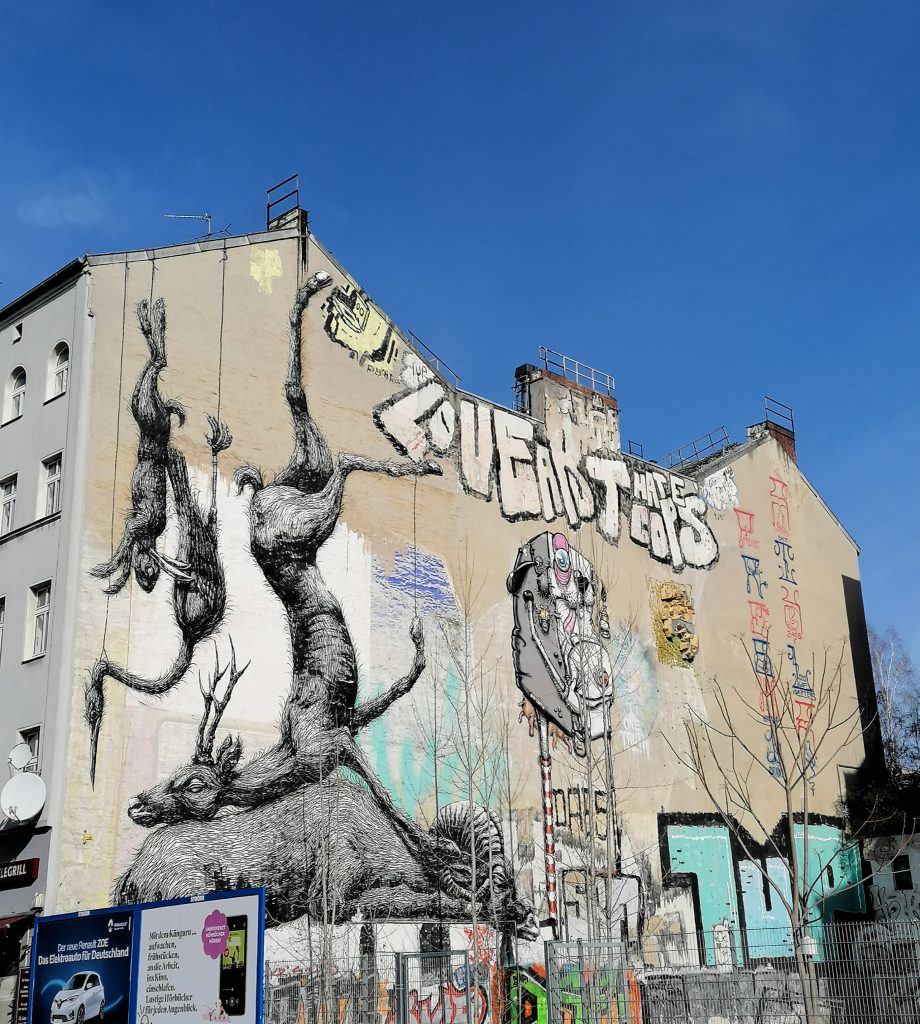
Berlin (2020) 
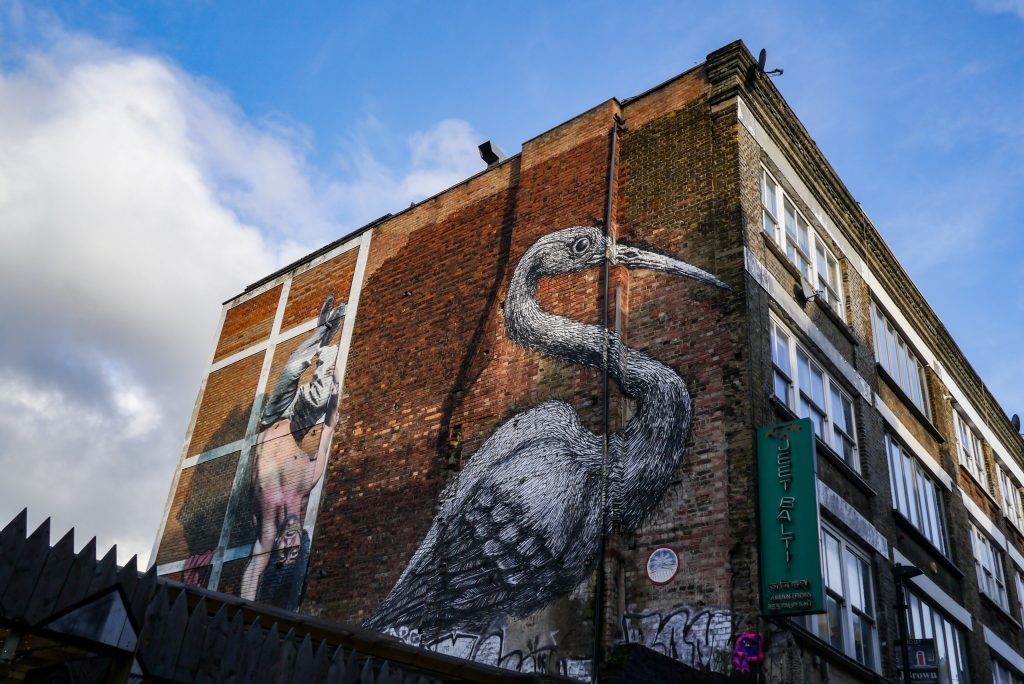
London (2019)
To visit the exhibition:
Natural History exhibition, ROA
Itinerrance Gallery
24b Boulevard du Général d’Armée Jean Simon, 75013 Paris
Until March 31. Open Tuesdays to Saturdays 11am-5pm.
More resources:
- Eludut, E., « ROA – between dreams and reality ». Graffiti Art magazine, 2020
- Roa’s mural – Cat’s Skeleton for Boulevard Paris 13
- Van Meenen, B., Natural History, personal exhibition of ROA in Paris (FR). Itinerrance Gallery, 2020.
- ANNIHILATION exhibition in Melbourne (AU), Backwoods Gallery, 2020
All our sources about Biodiversity for this article are in French. You can find them in the bibliography of the French version of the article here.
